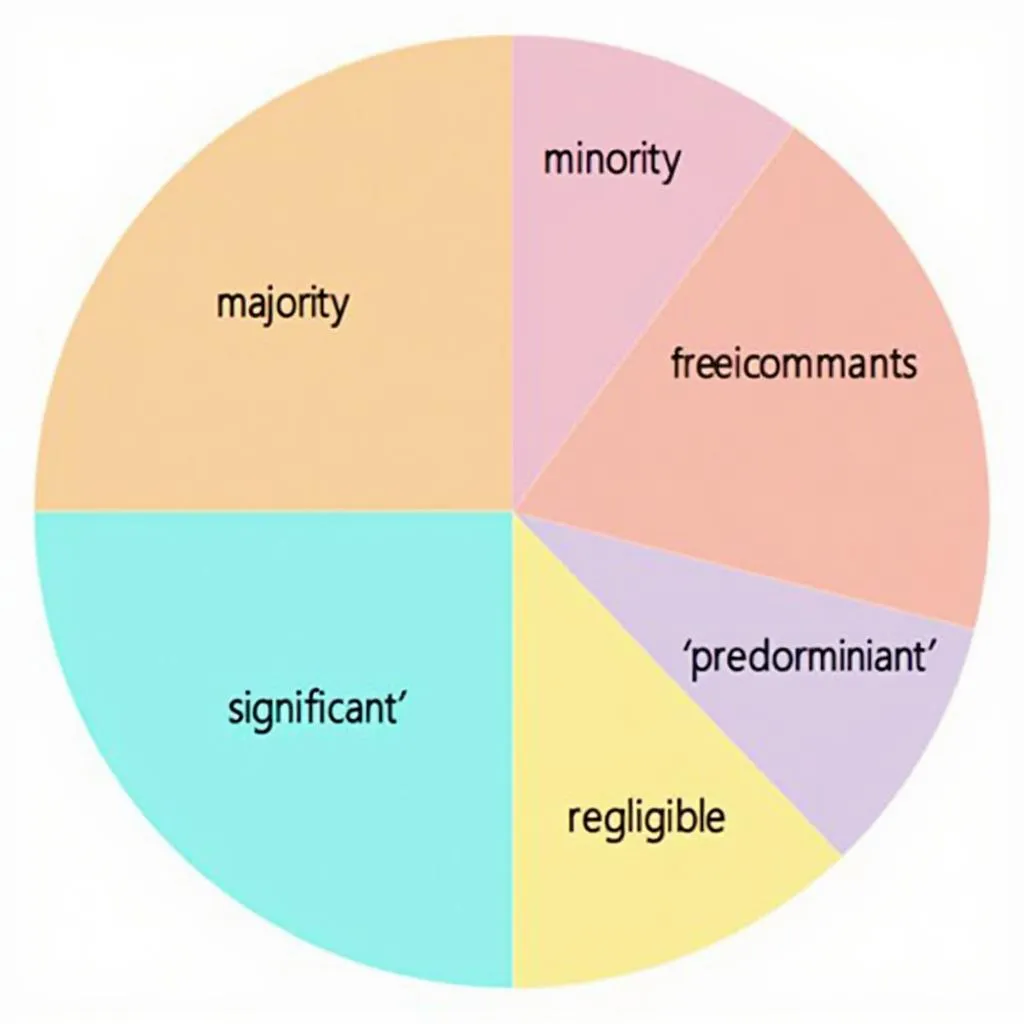Understanding the Importance of Pie Chart Vocabulary
Mastering the appropriate vocabulary for describing pie charts is crucial for success in IELTS Writing Task 1. Pie charts are a common visual representation in the IELTS exam, and having a strong grasp of the specific language used to analyze them can significantly improve your score. This article will provide you with essential vocabulary and strategies to effectively describe pie charts in your IELTS Writing Task 1 response.
Key Vocabulary for Describing Pie Charts
Segments and Proportions
When describing a pie chart, it’s important to use precise language to discuss the different parts and their relative sizes. Here are some key terms:
- Segment: A portion or section of the pie chart
- Slice: Another term for a segment of the pie chart
- Proportion: The relative size of a segment compared to the whole
- Percentage: The numerical representation of a proportion, expressed as a part of 100
- Fraction: A way to express a proportion as a part of a whole (e.g., one-third, one-quarter)
Example sentence: “The largest segment of the pie chart, representing 40% of the total, shows the proportion of students who prefer studying in the morning.”
Comparing Segments
To effectively analyze a pie chart, you’ll need vocabulary to compare different segments:
- Majority: The largest portion, more than half of the total
- Minority: A small portion, less than half of the total
- Predominant: The most common or prevalent category
- Significant: A noteworthy or considerable portion
- Negligible: An extremely small or insignificant portion
Example sentence: “While the majority of respondents prefer tea, a significant minority, about one-third, favor coffee.”

Describing Proportions
Use these phrases to describe the size of different segments:
- Account for: To represent a certain proportion of the whole
- Make up: To constitute a certain percentage
- Comprise: To be composed of or consist of
- Represent: To stand for or symbolize a certain proportion
Example sentence: “Environmental factors account for 25% of the reasons given for choosing a particular university.”
Expressing Precise and Approximate Values
When describing pie charts, you may need to express both exact and estimated figures:
- Exactly: Used for precise percentages
- Precisely: Another term for exact figures
- Approximately: Used for estimates or rounded figures
- Roughly: Similar to approximately, for less precise estimates
- Just over/under: Slightly more or less than a given value
Example sentence: “The pie chart shows that precisely 18% of the budget is allocated to marketing, while approximately one-fifth is dedicated to research and development.”
Strategies for Describing Pie Charts
Grouping Similar Segments
When analyzing pie charts with multiple segments, it can be helpful to group similar categories:
- Combined: Used to describe the total of two or more segments
- Collectively: Indicating the total of several segments taken together
- In total: Expressing the sum of multiple segments
Example sentence: “While individually small, the three smallest segments combined account for 30% of the total responses.”
Identifying Trends and Patterns
Use these terms to discuss overall patterns in the pie chart:
- Dominate: To be the most prominent or influential
- Outweigh: To exceed in importance or influence
- Stark contrast: A clear and significant difference between segments
Example sentence: “There is a stark contrast between the two largest segments, which together dominate the chart, and the remaining smaller slices.”
Describing Changes Over Time
If you’re comparing two pie charts representing different time periods, use these phrases:
- Increase/decrease: To show a change in proportion over time
- Remain stable: To indicate no significant change
- Shift: To describe a change in the distribution of proportions
Example sentence: “The proportion of renewable energy sources increased from 10% to 25% between 2010 and 2020, while fossil fuels saw a corresponding decrease.”
Tips for Using Pie Chart Vocabulary Effectively
-
Vary your language: Use a range of vocabulary to avoid repetition and demonstrate your linguistic ability.
-
Be precise: Use exact figures when they are provided, but don’t be afraid to use approximations for more complex percentages.
-
Focus on key features: Highlight the most significant aspects of the pie chart, such as the largest segments or notable differences between categories.
-
Use appropriate tenses: Typically, you’ll use the present simple tense to describe a single pie chart, but pay attention to any time references if comparing charts from different periods.
-
Practice regularly: Familiarize yourself with different types of pie charts and practice describing them using the vocabulary you’ve learned.
Conclusion
Mastering the vocabulary for describing pie charts is essential for achieving a high score in IELTS Writing Task 1. By incorporating these key terms and phrases into your analysis, you’ll be able to provide a clear, accurate, and well-structured response. Remember to practice regularly with a variety of pie charts to build your confidence and fluency in using this specialized vocabulary.